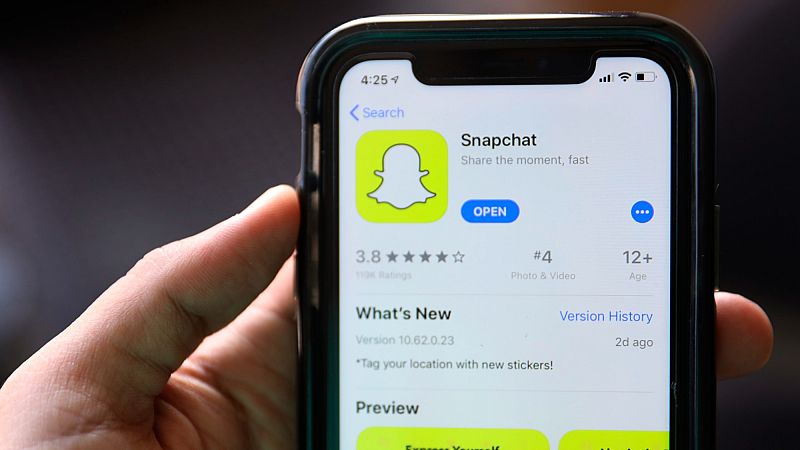Amazon internet outage hits major websites and mobile apps such as Snapchat. Here's what we know

Some of the world's biggest apps and websites, such as Amazon, Google, Snapchat, Roblox, Fortnite, and Canva, were hit by a major internet outage on Monday morning.
The issues began at around 9 a.m. CET, according to the tracking website Down Detector.
The problems appear to be related to an issue at Amazon Web Services (AWS), which offers the infrastructure that underpins much of the internet and gives its clients access to servers, databases, and storage without having to build their own infrastructure.
As of 12:35 p.m. CET, AWS said the underlying issue has been "fully mitigated" and that it was continuing to see recovery across most sites affected.
This afternoon, it said the problem was caused by an issue with companies connecting to AWS's data services. AWS said this issue had been fixed and most of its services are back to normal, but that there is a backlog the system needs to address.
"We continue to work toward full resolution," AWS said in a statement.
What went wrong?
AWS said there appears to have been "significant error rates" for requests made to its data storage service DynamoDB in the "US-EAST-1 Region".
The US-EAST-1 region relates to services hosted in northern Virginia but the issues are also affecting its other services in that region.
Many of the outages appear to be concentrated in the United States, with a focus in Virginia, which is considered the global capital for data centres, according to website performance tracking site ThousandEyes.
How does AWS work?
AWS essentially offers cloud services to companies that use the internet. This means companies don't have to build their own data centres, which store computing machines and hardware, as they use AWS's instead.
What sites were affected?
According to Down Detector, the sites affected included online games, mobile service providers, and the United Kingdom's tax authority HMRC, as well as French telecoms companies SFR and Free.
It also included cryptocurrency exchange Coinbase, which told its customers that "all funds are safe" in a message on X.
Here is the list: Snapchat, Slack, Signal, Tinder, Ring, Roblox, Clash Royale, Life360, My Fitness Pal, Xero, Canva, Amazon, Amazon Web Services, Amazon Music, Prime Video, Clash of Clans, Fortnite, Wordle, Duolingo, Coinbase, HMRC, Vodafone, PlayStation, Pokémon Go.
Several hours after the initial problems, Down Detector reported that there was a dip in the number of issues reported by users.
The New York Times reported that the outage affected airline travel, with long queues forming at LaGuardia Airport in New York at the check-in desks as the kiosks appeared not to work.
Similarities to the CrowdStrike outage
In July 2024, the cybersecurity firm CrowdStrikesuffered a major global IT outage that brought down hospitals, airlines, banks, and government offices.
The incident parallels this latest AWS outage as it underpins how problems with one technology provider can have a global impact.
"Europe’s dependency on monopoly cloud companies like Amazon is a security vulnerability and an economic threat we can’t ignore," Cori Crider, executive director of the Future of Technology Institute, said in a statement.
"Germany, France, and other major European economies should immediately move to shore up their economic and security resilience by moving their services off monopoly platforms and buying from local providers – yesterday,” she added.
Meanwhile, Charlotte Wilson, head of enterprise at Check Point Software Technologies, recommended that people keep good backups, save important information offline, and know alternative ways to connect to the internet or pay if systems fail. She also warned users to stay alert for scams or phishing attempts, especially when banking sites are down.
She advised companies to "diversify" and use several different cloud providers.
“Today’s outage is another reminder that the digital world doesn’t stop at borders - a local fault can ripple worldwide in minutes," Wilson told Euronews Next in a statement.
Today

